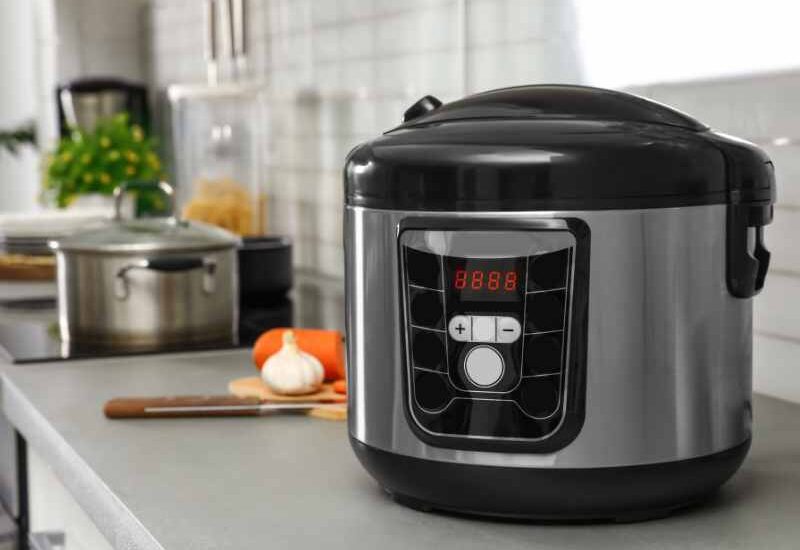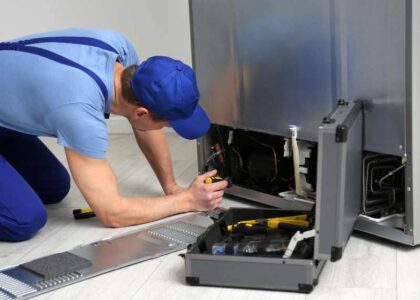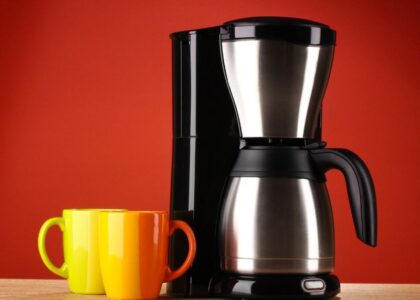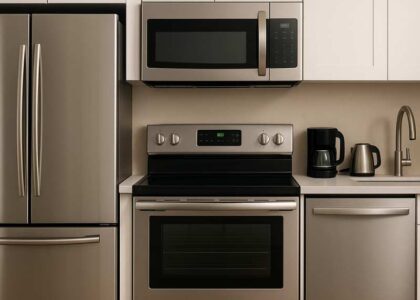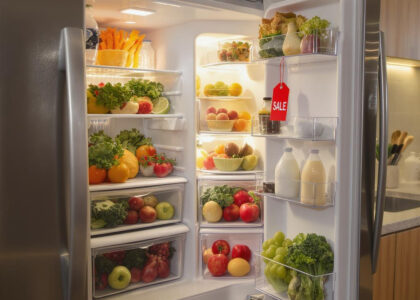In today’s fast-paced world, the kitchen has become both a hub of creativity and a battlefield against time. Busy schedules, long work hours, and family responsibilities often leave little room for the joy of cooking. Enter the electric pressure cooker—a modern appliance designed to make home cooking faster, easier, and more enjoyable. From meal prep to complex culinary experiments, this versatile device has quietly become a hero for home cooks, offering speed, efficiency, and reliability in a single package.
Electric pressure cookers, sometimes referred to as programmable multi-cookers, combine the power of high-pressure steam with digital controls to create a cooking experience that is both safe and efficient. Unlike traditional stovetop pressure cookers, these appliances offer preset programs, timers, and safety mechanisms, allowing users to simply add ingredients and let the device handle the rest. Whether you are preparing a hearty stew, perfectly steamed rice, or tender chicken, an electric pressure cooker promises consistent results with minimal effort.
Understanding the Electric Pressure Cooker
At its core, an electric pressure cooker is a sealed vessel with built-in heating elements. Once the lid is locked and cooking begins, water or broth inside heats beyond its normal boiling point, generating steam that builds up pressure. This pressure raises the temperature inside, allowing food to cook faster while retaining flavor and nutrients. The process may seem complex, but modern electric pressure cookers are designed for simplicity.
Most models feature digital interfaces with preset buttons for common dishes such as rice, beans, poultry, soup, and even yogurt. Users simply select the program, and the appliance adjusts time, pressure, and temperature automatically. Advanced models even account for factors like altitude and ingredient density, ensuring precise cooking regardless of conditions.
How Does It Work?
The operation of an electric pressure cooker can be broken down into several steps:
- Preparation and Sealing: Ingredients, along with at least 1–2 cups of liquid, are added to the inner pot. The lid is securely locked with a sealing ring creating an airtight environment.
- Heating and Pressurization: Once a program is selected, the heating element activates, boiling the liquid and generating steam. Pressure builds up to 10–15 PSI, raising the boiling point to approximately 240–250°F (115–121°C).
- Cooking Under Pressure: Sensors maintain the optimal temperature and pressure, infusing flavors and breaking down fibers in tough ingredients like beans or meats. The cooking process is often 70% faster than conventional methods.
- Depressurization: At the end of cooking, pressure is released either naturally over 10–30 minutes or quickly via a manual valve, depending on the type of food. Safety locks prevent opening the lid until pressure normalizes.
This combination of science and automation allows even novice cooks to achieve professional results.
Why It’s a Kitchen Hero
The appeal of electric pressure cookers lies in their ability to simplify and improve everyday cooking. Some of the standout benefits include:
- Time-Saving: Meals that traditionally take hours can be ready in minutes. For example, dried beans cook in 30–45 minutes rather than 2–3 hours of soaking and boiling.
- Nutrient Preservation: Sealed cooking minimizes oxygen exposure and water loss, retaining up to 90% of vitamins compared to conventional methods.
- Energy Efficiency: Using less electricity than ovens or stovetops, electric pressure cookers can cut utility costs by up to 50%.
- Enhanced Flavor: Pressure forces moisture and seasonings into food, producing richer, more intense flavors without additional fats or salts.
- Versatility: One appliance can perform multiple roles—slow cooker, rice cooker, sauté pan, and more—reducing kitchen clutter.
- Healthier and Sustainable Cooking: By encouraging whole-food recipes and batch cooking, users reduce food waste and promote better nutrition.
Scientific studies also suggest that pressure cooking can decrease anti-nutrients in legumes, improving digestibility, and many users report an improved work-life balance thanks to the hands-off nature of the appliance.
Key Features to Consider
Selecting the right electric pressure cooker depends on your household and cooking habits. Essential features include:
- Capacity: Options range from 3-quart models for singles to 10-quart models for large families or gatherings.
- Pressure Levels: Adjustable settings allow precise control for different types of food, from rice to meat.
- Preset Programs: Simplify cooking for popular dishes like beans, poultry, soups, or slow-cooked meals.
- Safety Enhancements: Modern cookers often feature 10 or more safety mechanisms, including lid locks, overpressure vents, and thermal fuses.
- Material Quality: Stainless steel pots resist corrosion, while non-stick options ease cleaning but may wear faster.
- Smart Integrations and Accessories: Some models offer Wi-Fi for remote monitoring, while accessories like trivets, steam baskets, and measuring cups increase versatility.
Prioritizing durability, user-friendliness, and essential features can ensure long-term satisfaction with your appliance.
Safety First
High-pressure cooking might sound intimidating, but electric pressure cookers are designed with safety in mind. Users should always follow the manufacturer’s guidelines, check seals and valves regularly, and maintain minimum liquid levels. Quick or natural pressure release methods should be used appropriately, and the cooker should be placed on a stable, flat surface away from children. Modern designs often incorporate up to 13 safety layers, making them far safer than earlier models.
Tips for Usage and Creative Cooking
Electric pressure cookers open up a world of culinary possibilities:
- Ingredient Layering: Place root vegetables at the bottom and proteins at the top for even cooking.
- Flavor Boosting: Sauté ingredients first to develop deeper flavors.
- Cooking Frozen Foods: Add a few extra minutes to cook frozen meats and vegetables directly.
- Recipe Conversion: Reduce traditional cooking times by up to 70%, experimenting carefully with small batches.
- High-Altitude Adjustments: Increase cooking time slightly and ensure enough liquid is present.
Maintenance and Troubleshooting
Proper care ensures your pressure cooker lasts for years. Routine cleaning includes washing inner pots, wiping the base, and soaking sealing rings to prevent odors. Valves and vents should be inspected and rinsed to remove debris, and descaling with vinegar is recommended for hard water areas. Annual inspections of electrical components and seals help prevent malfunctions.
Common issues include failure to pressurize, burn warnings, steam leaks, stuck lids, and error codes. Most problems are easily fixable by checking seals, adjusting liquid levels, or following manufacturer instructions.
Comparison With Other Appliances
Electric pressure cookers outperform many traditional kitchen appliances in speed, versatility, and energy efficiency. While slow cookers simmer for hours, and ovens require preheating and longer cook times, electric pressure cookers deliver meals up to 70% faster. Multi-cookers like the Instant Pot offer similar versatility, though standard electric pressure cookers excel in simplicity and consistent results. One limitation is that they don’t crisp food like air fryers or ovens unless using hybrid models.
Buying Guide
When shopping for an electric pressure cooker, consider:
- Budget: Basic models start around $50, while advanced versions cost $100–200.
- Size: A 6-quart model suits most families.
- Essential Features: Focus on safety, preset programs, and durability before extra smart integrations.
- Material and Warranty: Choose stainless steel for longevity and ensure at least 1–3 years of warranty.
- User Feedback: Reading reviews can provide real-world insights.
- Purchase Options: Online shopping offers convenience, while in-store visits allow hands-on testing.
Electric pressure cookers are more than just kitchen gadgets; they are time-saving, versatile, and health-conscious allies in modern cooking. By combining speed, precision, and safety, they make it easier to prepare nutritious meals while freeing up valuable time. Whether you are a novice cook or a seasoned culinary enthusiast, investing in an electric pressure cooker can transform your approach to home cooking. With proper use, maintenance, and creativity, this appliance has the potential to become the true hero of your kitchen.
FAQ
1️⃣ What distinguishes an electric pressure cooker from a stovetop one?
Electric models are automated with built-in safety controls, making them safer and more convenient.
2️⃣ Can I open the lid mid-cooking?
No, safety locks prevent opening until the pressure is fully released.
3️⃣ Is it noisy?
Minimal sounds occur, mostly when steam is vented.


